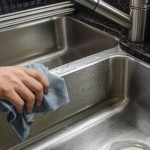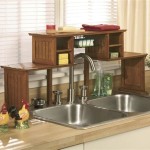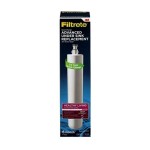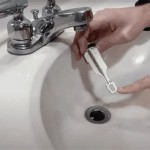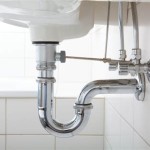Kitchen Sink P Trap Installation
A P-trap is a plumbing fixture that is installed under a sink to prevent sewer gases from entering the home. It is a curved pipe that forms a U-shape, with the bottom of the U filled with water. This water seal prevents sewer gases from escaping, and it also helps to keep the drain from becoming clogged.
Installing a P-trap is a relatively simple task that can be completed in a few minutes. However, there are a few things that you need to keep in mind in order to ensure that the trap is installed correctly.
Tools and Materials
Before you begin, you will need to gather the following tools and materials:
- P-trap
- Two slip nuts
- Two washers
- Adjustable wrench
- Bucket
Steps
Once you have gathered your tools and materials, you can follow these steps to install the P-trap:
1. Place a bucket under the sink to catch any water that may leak during the installation process. 2. Remove the old P-trap by loosening the slip nuts that connect it to the sink and the drainpipe. 3. Clean the mating surfaces of the sink and the drainpipe. 4. Apply a bead of plumber's putty to the mating surface of the sink. 5. Install the new P-trap by hand-tightening the slip nuts that connect it to the sink and the drainpipe. 6. Use the adjustable wrench to tighten the slip nuts further, but do not overtighten them. 7. Check for leaks by running water through the sink. If you see any leaks, tighten the slip nuts further until the leaks stop.Tips
Here are a few tips to help you install the P-trap correctly:
- Make sure that the P-trap is the correct size for your sink. The trap should be the same diameter as the drainpipe.
- Use a new P-trap and slip nuts when installing a new P-trap. Old P-traps and slip nuts can be damaged and may not seal properly.
- Apply a bead of plumber's putty to the mating surface of the sink before installing the P-trap. This will help to create a watertight seal.
- Hand-tighten the slip nuts first, and then use the adjustable wrench to tighten them further. Do not overtighten the slip nuts, or you may damage them.
- Check for leaks by running water through the sink. If you see any leaks, tighten the slip nuts further until the leaks stop.
Troubleshooting
If you are having trouble installing the P-trap, here are a few troubleshooting tips:
- Make sure that the P-trap is the correct size for your sink. The trap should be the same diameter as the drainpipe.
- Check to make sure that the mating surfaces of the sink and the drainpipe are clean. If there is any dirt or debris on these surfaces, the P-trap may not seal properly.
- Apply a bead of plumber's putty to the mating surface of the sink before installing the P-trap. This will help to create a watertight seal.
- Tighten the slip nuts hand-tight first, and then use the adjustable wrench to tighten them further. Do not overtighten the slip nuts, or you may damage them.
- Check for leaks by running water through the sink. If you see any leaks, tighten the slip nuts further until the leaks stop.
If you are still having trouble installing the P-trap, you may want to call a plumber for assistance.
How To Install A Kitchen Sink Drain

Plumbing Kitchen Sink P Trap Installation Advice Home Improvement Stack Exchange

How To Install A Plastic Kitchen P Trap

How To Fix Or Replace A Leaky Sink Trap Hometips
How To Install A Kitchen Sink Drain

How To Install A Kitchen Sink Drain Diy Guide For You

Kitchen Sink Plumbing How To Make A Drain Better

Kitchen Sink P Trap And Long Horizontal Drain

How To Install A Kitchen Sink Drain With Pictures Wikihow

Keeney Insta Plumb 1 2 In Plastic Push To Connect P Trap 400ipk At Com
